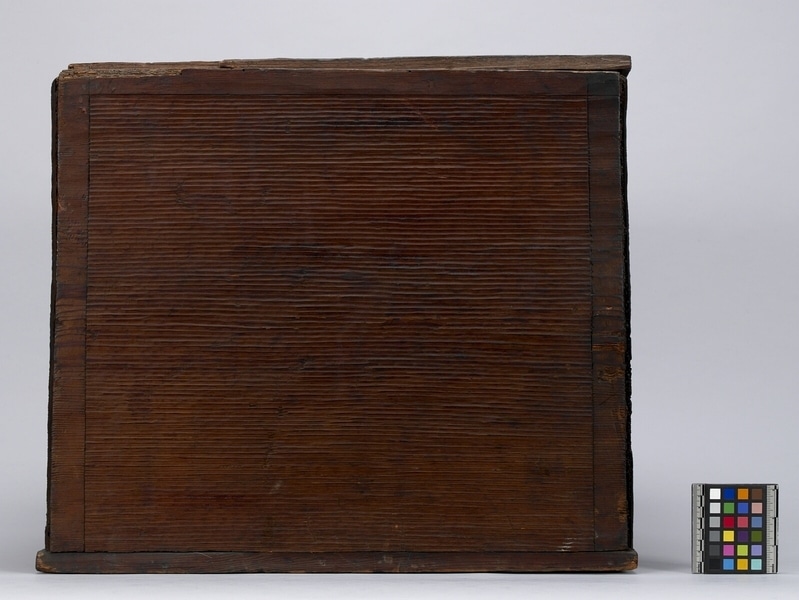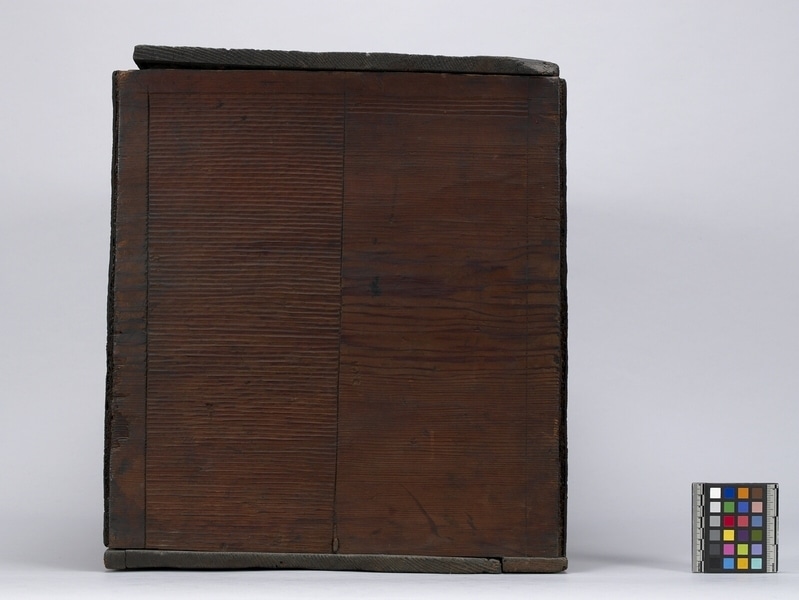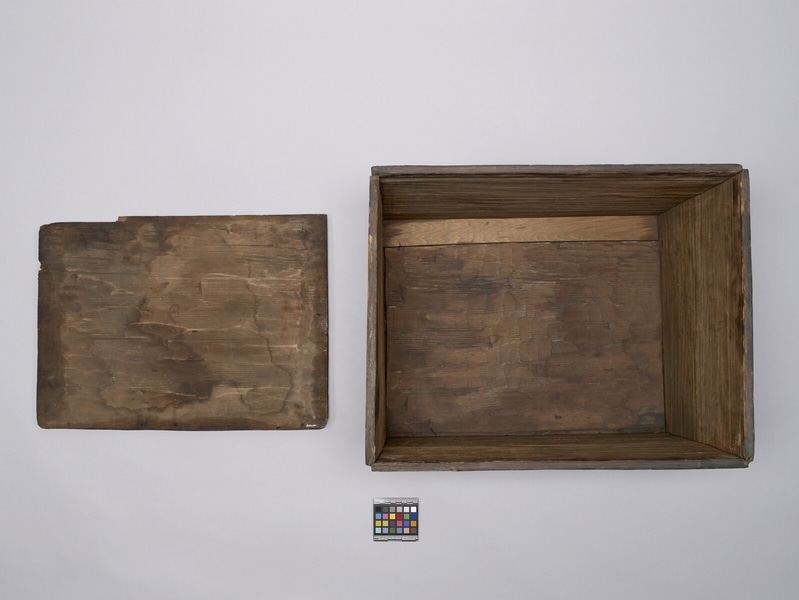Bentwood Box Item Number: A3572 from the MOA: University of British Columbia




Description
Bentwood box with a lid, bent with outside corners opened and joined at the seam with wooden nails. Three of the four sides have chiselled decoration: one of the longer sides is almost completely covered in rows of chiseling with a border of relatively smooth wood, and the two shorter sides are split down the centre with one half chiseled in rows, and the other half chiseled at the top with four rows and a border on the sides and top of relatively smooth wood.
History Of Use
Bentwood boxes were used primarily for storage of food, implements, and ceremonial regalia, but were also used for cooking and serving food. They were trade goods or gifts, and were symbols of wealth and prestige. Boxes used for ceremonial purposes were usually more highly decorated than those for utilitarian use.
Specific Techniques
Bentwood, or kerfed-corner, containers are constructed by a process unique to the Northwest Coast Aboriginal peoples. The carver begins with a single straight-grained plank of red cedar, or sometimes yellow cedar, spruce, or yew. The surface of the plank is finished with chisels, adzes, and knives; in earlier times, it was smoothed further with sandstone or dried sharkskin. Then three parallel kerfs, or grooves, are carved out at measured points across the width of the board, at right angles to the long edge. The kerfs, which will become three corners of the box, allow the board to be steamed until the wood fibres are softened, and then carefully bent to form a box with symmetrical sides. The final corner, as well as a fitted base, are joined and fastened with pegs (through drilled holes) or laced with spruce root or twisted cedar withes (branches). Storage boxes also have fitted lids of cedar, hollowed from the inside. Finally, painted compositions may be applied to the completed box and shallow carving added to bring the forms into relief. A well-made bentwood box is watertight. Historically, most boxes were used to store preserved foods and material goods; plain cooking boxes could be used to steam or boil food by adding water and heated stones.
Item History
- Made in Vancouver Island, British Columbia, Canada
- Owned by Ross A. Brooks
- Owned by Mabel Orr Brooks before April 1951
- Received from Mabel Orr Brooks (Seller) and H. R. MacMillan (Funding source) during April 1951
What
Who
- Culture
- Northwest Coast
- Previous Owner
- Ross A. Brooks and Mabel Orr Brooks
- Received from
- Mabel Orr Brooks (Seller) and H. R. MacMillan (Funding source)
Where
- Holding Institution
- MOA: University of British Columbia
- Made in
- Vancouver Island, British Columbia, Canada
When
- Ownership Date
- before April 1951
- Acquisition Date
- during April 1951
Other
- Condition
- fair
- Accession Number
- 1863/0003